Study Compares Two Surgical Techniques To Relieve Migraine Headaches
MedicalResearch.com Interview with: Dr. Bahman Guyuron MD Cleveland and Lyndhurst, Ohio From the Department of Plastic Surgery, University Hospital Case Medical Center;...
MedicalResearch.com Interview with: Dr. Bahman Guyuron MD Cleveland and Lyndhurst, Ohio From the Department of Plastic Surgery, University Hospital Case Medical Center;...
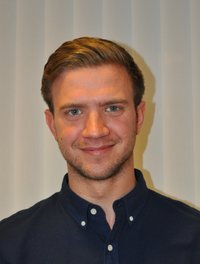 MedicalResearch.com Interview with:
John Maret-Ouda MD, PhD candidate
Upper Gastrointestinal Surgery
Department of Molecular medicine and Surgery
Karolinska Institutet
Stockholm, Sweden
MedicalResearch: What is the background for this study? What are the main findings?
Dr. Maret-Ouda : This review is part of the BMJ series “Uncertainties pages”, where clinically relevant, but debated, medical questions are highlighted and discussed. The present study is assessing treatment of severe gastro-oesophageal reflux disease, where the current treatment options are medical (proton-pump inhibitors) or surgical (laparoscopic antireflux surgery). The clinical decision-making is often left to the clinician and local guidelines. We evaluated the existing literature to compare the two treatment options regarding reflux control, complications, future risk of oesophageal adenocarcinoma, health related quality of life, and cost effectiveness.
The main findings were that surgery might provide slightly better reflux control and health related quality of life, but is associated with higher risks of complications compared to medication. A possible preventive effect regarding oesophageal adenocarcinoma remains uncertain. Regarding cost effectiveness, medication seems more cost effective in the short term, but surgery might be more cost effective in the longer term. Since medication provides good treatment of severe gastro-oesophageal reflux disease, but with lower risks of complications, this remains the first line treatment option.
(more…)
MedicalResearch.com Interview with:
John Maret-Ouda MD, PhD candidate
Upper Gastrointestinal Surgery
Department of Molecular medicine and Surgery
Karolinska Institutet
Stockholm, Sweden
MedicalResearch: What is the background for this study? What are the main findings?
Dr. Maret-Ouda : This review is part of the BMJ series “Uncertainties pages”, where clinically relevant, but debated, medical questions are highlighted and discussed. The present study is assessing treatment of severe gastro-oesophageal reflux disease, where the current treatment options are medical (proton-pump inhibitors) or surgical (laparoscopic antireflux surgery). The clinical decision-making is often left to the clinician and local guidelines. We evaluated the existing literature to compare the two treatment options regarding reflux control, complications, future risk of oesophageal adenocarcinoma, health related quality of life, and cost effectiveness.
The main findings were that surgery might provide slightly better reflux control and health related quality of life, but is associated with higher risks of complications compared to medication. A possible preventive effect regarding oesophageal adenocarcinoma remains uncertain. Regarding cost effectiveness, medication seems more cost effective in the short term, but surgery might be more cost effective in the longer term. Since medication provides good treatment of severe gastro-oesophageal reflux disease, but with lower risks of complications, this remains the first line treatment option.
(more…) MedicalResearch.com Interview with:
Vanita Ahuja, MD, MPH
Department of General Surgery
York Hospital, York, Pennsylvania
MedicalResearch: What is the background for this study? What are the main findings?
Dr. Ahuja: Robotic-assisted surgery has been slowly accepted within the medical community. Felger et al. (1999), Falk et al. (2000), and Loumet et al. (2000) state that specific to cardiac surgery, the advantages of the robot in coronary artery bypass grafting (CABG) and valvular operations were demonstrated with increased visualization, ease of harvest, and quality of vascular anastomoses as early as 1999. However, Giulianotti, et al. (2003), Morgan et al. (2005), and Barbash et al. (2010) suggest that although safety and efficacy are supported, it is not conclusive yet that robot-assisted surgery is cost-effective, given the high cost of the robot itself, longer operating times, and the short life of the robotic instruments. The purpose of our paper was to compare outcomes of complications, length of stay (LOS), actual cost, and mortality between non-robotic and robotic-assisted cardiac surgery.
In general surgery and subspecialties, the use of the robot has increased significantly over the past few years. It has been noted that robotic surgery improves on laparoscopic surgery by providing increased intra-cavity articulation, increased degrees of freedom, and downscaling of motion amplitude that may reduce the strain on the surgeon.
The biggest growth in robotic surgery has been seen in the fields of gynecology and urology. Recently, Wright et al. reported an increase in robotic assisted hysterectomy from 0.5 percent of the procedures in 2007 compared to 9.5 percent in 2010 for benign disease. In their study, robotic assisted surgery had similar outcomes to laparoscopic surgery but higher total cost of $2,189 more per case. In urologic surgery, Leddy et al. reported in 2010 that radical prostatectomy remains the biggest utilization of robotic assisted surgery in urology with 1% in 2001 to 40% of all cases in 2006 performed in the United States.
Utilizing a nationwide database from 2008-2011, subjects were propensity matched by 14 patient characteristics to reduce selection bias in a retrospective study. The patients were then divided into three groups by operation types: valves, vessels and other type. Univariate analysis revealed that robotic-assisted surgery, compared to non-robotic surgery, had higher cost ($39,030 vs. $36,340), but lower LOS (5 vs. 6 days) and mortality (1% vs. 1.9%, all p<0.001). For those who had one or more complications, robotic-assisted cardiac surgery had fewer complications (27.2%) to non-robotic cardiac surgery (30.3%, p < .001).
(more…)
MedicalResearch.com Interview with:
Vanita Ahuja, MD, MPH
Department of General Surgery
York Hospital, York, Pennsylvania
MedicalResearch: What is the background for this study? What are the main findings?
Dr. Ahuja: Robotic-assisted surgery has been slowly accepted within the medical community. Felger et al. (1999), Falk et al. (2000), and Loumet et al. (2000) state that specific to cardiac surgery, the advantages of the robot in coronary artery bypass grafting (CABG) and valvular operations were demonstrated with increased visualization, ease of harvest, and quality of vascular anastomoses as early as 1999. However, Giulianotti, et al. (2003), Morgan et al. (2005), and Barbash et al. (2010) suggest that although safety and efficacy are supported, it is not conclusive yet that robot-assisted surgery is cost-effective, given the high cost of the robot itself, longer operating times, and the short life of the robotic instruments. The purpose of our paper was to compare outcomes of complications, length of stay (LOS), actual cost, and mortality between non-robotic and robotic-assisted cardiac surgery.
In general surgery and subspecialties, the use of the robot has increased significantly over the past few years. It has been noted that robotic surgery improves on laparoscopic surgery by providing increased intra-cavity articulation, increased degrees of freedom, and downscaling of motion amplitude that may reduce the strain on the surgeon.
The biggest growth in robotic surgery has been seen in the fields of gynecology and urology. Recently, Wright et al. reported an increase in robotic assisted hysterectomy from 0.5 percent of the procedures in 2007 compared to 9.5 percent in 2010 for benign disease. In their study, robotic assisted surgery had similar outcomes to laparoscopic surgery but higher total cost of $2,189 more per case. In urologic surgery, Leddy et al. reported in 2010 that radical prostatectomy remains the biggest utilization of robotic assisted surgery in urology with 1% in 2001 to 40% of all cases in 2006 performed in the United States.
Utilizing a nationwide database from 2008-2011, subjects were propensity matched by 14 patient characteristics to reduce selection bias in a retrospective study. The patients were then divided into three groups by operation types: valves, vessels and other type. Univariate analysis revealed that robotic-assisted surgery, compared to non-robotic surgery, had higher cost ($39,030 vs. $36,340), but lower LOS (5 vs. 6 days) and mortality (1% vs. 1.9%, all p<0.001). For those who had one or more complications, robotic-assisted cardiac surgery had fewer complications (27.2%) to non-robotic cardiac surgery (30.3%, p < .001).
(more…) MedicalResearch.com Interview with:
Dr. Andrea Tricco Ph.D
Dalla Lana School of Public Health
University of Toronto
Medical Research: What is the background for this study? What are the main findings?
Dr. Tricco: We were commissioned by Health Canada to assess the safety and effectiveness of serotonin (5-HT3) receptor antagonists in patients undergoing surgery. In order to examine this research question, we conducted a systematic review and network meta-analysis including >450 studies.
We found that more patients receiving granisetron plus dexamethasone experienced arrhythmia compared to all other interventions and placebo. No differences were observed regarding mortality and QT prolongation in meta‐analysis; no studies reported on PR prolongation or sudden cardiac death. Granisetron plus dexamethasone was often the most effective antiemetic, with the number needed to treat ranging from two to nine. We found that ondansetron plus droperidol intravenous (IV) was also a highly effective antiemetic for decreasing the risk of vomiting and post-operative nausea and vomiting (PONV). (more…)
MedicalResearch.com Interview with:
Dr. Andrea Tricco Ph.D
Dalla Lana School of Public Health
University of Toronto
Medical Research: What is the background for this study? What are the main findings?
Dr. Tricco: We were commissioned by Health Canada to assess the safety and effectiveness of serotonin (5-HT3) receptor antagonists in patients undergoing surgery. In order to examine this research question, we conducted a systematic review and network meta-analysis including >450 studies.
We found that more patients receiving granisetron plus dexamethasone experienced arrhythmia compared to all other interventions and placebo. No differences were observed regarding mortality and QT prolongation in meta‐analysis; no studies reported on PR prolongation or sudden cardiac death. Granisetron plus dexamethasone was often the most effective antiemetic, with the number needed to treat ranging from two to nine. We found that ondansetron plus droperidol intravenous (IV) was also a highly effective antiemetic for decreasing the risk of vomiting and post-operative nausea and vomiting (PONV). (more…)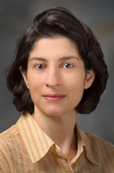 MedicalResearch.com Interview with:
Isabelle Bedrosian, M.D., F.A.C.S.
Associate Professor, Department of Surgical Oncology, Division of Surgery,
Medical Director, Nellie B. Connelly Breast Center
The University of Texas MD Anderson Cancer Center, Houston, TX
Medical Research: What is the background for this study? What are the main findings?
Dr. Bedrosian: There have been a number of reports on the rates of Breast Conserving Therapy (BCT) and mastectomy among women with early stage breast cancer. These reports have been discordant, with some suggesting that index mastectomy rates have increased and others suggestion Breast Conserving Therapy rates have actually increased. We hypothesized that these differences in reporting may be due to data source (ie tertiary referral centers vs population based studies) and turned to the NCDB, which captures 70% of cancer cases in the US and as such provides us with the most comprehensive overview on patient treatment patterns.
(more…)
MedicalResearch.com Interview with:
Isabelle Bedrosian, M.D., F.A.C.S.
Associate Professor, Department of Surgical Oncology, Division of Surgery,
Medical Director, Nellie B. Connelly Breast Center
The University of Texas MD Anderson Cancer Center, Houston, TX
Medical Research: What is the background for this study? What are the main findings?
Dr. Bedrosian: There have been a number of reports on the rates of Breast Conserving Therapy (BCT) and mastectomy among women with early stage breast cancer. These reports have been discordant, with some suggesting that index mastectomy rates have increased and others suggestion Breast Conserving Therapy rates have actually increased. We hypothesized that these differences in reporting may be due to data source (ie tertiary referral centers vs population based studies) and turned to the NCDB, which captures 70% of cancer cases in the US and as such provides us with the most comprehensive overview on patient treatment patterns.
(more…) MedicalResearch.com Interview with:
Joseph A. Ladapo, MD, PhD
Assistant Professor of Medicine
Section on Value and Effectiveness
Department of Population Health
NYU Langone School of Medicine
Medical Research: What is the background for this study? What are the main findings?
Dr. Ladapo: Routine tests before elective surgery are largely considered to be of low value, and they may also increase costs. In an attempt to discourage their use, two professional societies released guidance on use of routine preoperative testing in 2002. We sought to examine the long-term national effect of these guidelines from the American College of Cardiology/American Heart Association and the American Society of Anesthesiologists on physicians' use of routine preoperative testing. While we found that overall rates of routine testing declined across several categories over the 14-year study period, these changes were not significant after accounting for overall changes in physicians’ ordering practices. Our findings suggest that professional guidance aimed at improving quality and reducing waste has had little effect on physician or hospital practice.
(more…)
MedicalResearch.com Interview with:
Joseph A. Ladapo, MD, PhD
Assistant Professor of Medicine
Section on Value and Effectiveness
Department of Population Health
NYU Langone School of Medicine
Medical Research: What is the background for this study? What are the main findings?
Dr. Ladapo: Routine tests before elective surgery are largely considered to be of low value, and they may also increase costs. In an attempt to discourage their use, two professional societies released guidance on use of routine preoperative testing in 2002. We sought to examine the long-term national effect of these guidelines from the American College of Cardiology/American Heart Association and the American Society of Anesthesiologists on physicians' use of routine preoperative testing. While we found that overall rates of routine testing declined across several categories over the 14-year study period, these changes were not significant after accounting for overall changes in physicians’ ordering practices. Our findings suggest that professional guidance aimed at improving quality and reducing waste has had little effect on physician or hospital practice.
(more…)MedicalResearch.com Interview with: Kristina H. Lewis, MD, MPH, SM Kaiser Permanente Georgia, Center for Clinical and Outcomes Research, Atlanta Department of Population Medicine Harvard Medical School/Harvard...
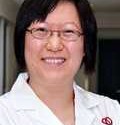 MedicalResearch.com Interview with:
Louise Sun, MD SM FRCPC
Assistant Professor Department of Anesthesiology,
University of Ottawa Staff | Division of Cardiac Anesthesiology
University of Ottawa Heart Institute
Medical Research: What is the background for this study? What are the main findings?
Dr. Sun: Preoperative testing provides important information for perioperative
planning and decision-making. However, given the rapid increase in health
care costs, there has been growing emphasis on the more rational use of
resources and thus the need to better understand the utilization patterns
of specific tests. Preoperative pulmonary function tests (PFTs) are
important in helping perioperative physicians identify patients at risk
for postoperative pulmonary complications, but few appropriate use
guidelines exist for this test. We conducted a population-based study
using linked administrative databases in Ontario, Canada to describe
temporal trends in preoperative pulmonary function tests
and assess whether the recent 2006 American College of Physicians (ACP) guidelines on risk assessment and prevention of postoperative pulmonary complications for non-cardiothoracic surgery influenced these trends.
We examined 511,625 individuals undergoing non-cardiothoracic surgery, amongst whom
3.6% underwent preoperative pulmonary function tests while 3.3% had non-operative PFTs.
Preoperative pulmonary function tests rates decreased over the study period and following the 2006 ACP guidelines while non-operative rates remained stable. By 2013,
preoperative pulmonary function tests were performed in fewer than 8% of Ontario patients with risk factors for pulmonary complications, while preoperative testing
rates among individuals without known respiratory disease had approached
rates seen in the non-operative setting. The decreasing preoperative pulmonary function tests rates contrast starkly against concurrent increases in rates of other
perioperative interventions such as preoperative anesthesia consultations
and stress testing.
(more…)
MedicalResearch.com Interview with:
Louise Sun, MD SM FRCPC
Assistant Professor Department of Anesthesiology,
University of Ottawa Staff | Division of Cardiac Anesthesiology
University of Ottawa Heart Institute
Medical Research: What is the background for this study? What are the main findings?
Dr. Sun: Preoperative testing provides important information for perioperative
planning and decision-making. However, given the rapid increase in health
care costs, there has been growing emphasis on the more rational use of
resources and thus the need to better understand the utilization patterns
of specific tests. Preoperative pulmonary function tests (PFTs) are
important in helping perioperative physicians identify patients at risk
for postoperative pulmonary complications, but few appropriate use
guidelines exist for this test. We conducted a population-based study
using linked administrative databases in Ontario, Canada to describe
temporal trends in preoperative pulmonary function tests
and assess whether the recent 2006 American College of Physicians (ACP) guidelines on risk assessment and prevention of postoperative pulmonary complications for non-cardiothoracic surgery influenced these trends.
We examined 511,625 individuals undergoing non-cardiothoracic surgery, amongst whom
3.6% underwent preoperative pulmonary function tests while 3.3% had non-operative PFTs.
Preoperative pulmonary function tests rates decreased over the study period and following the 2006 ACP guidelines while non-operative rates remained stable. By 2013,
preoperative pulmonary function tests were performed in fewer than 8% of Ontario patients with risk factors for pulmonary complications, while preoperative testing
rates among individuals without known respiratory disease had approached
rates seen in the non-operative setting. The decreasing preoperative pulmonary function tests rates contrast starkly against concurrent increases in rates of other
perioperative interventions such as preoperative anesthesia consultations
and stress testing.
(more…) MedicalResearch.com Interview with:
Jordan M. Cloyd, MD
Department of Surgery
Stanford University
Stanford, California
Medical Research: What is the background for this study? What are the main findings?
Dr. Cloyd: The motivation for the study was that, anecdotally, we had noticed that several of our patients who had been discharged on a weekend required readmission for potentially preventable reasons. We wanted to investigate whether the data supported the idea that weekend discharge was associated with a higher risk of hospital readmission.
(more…)
MedicalResearch.com Interview with:
Jordan M. Cloyd, MD
Department of Surgery
Stanford University
Stanford, California
Medical Research: What is the background for this study? What are the main findings?
Dr. Cloyd: The motivation for the study was that, anecdotally, we had noticed that several of our patients who had been discharged on a weekend required readmission for potentially preventable reasons. We wanted to investigate whether the data supported the idea that weekend discharge was associated with a higher risk of hospital readmission.
(more…)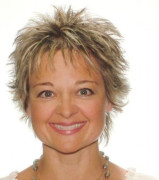 MedicalResearch.com Interview with:
Dr. Janet Martin PharmD, PhD
Director, Medical Evidence, Decision Integrity & Clinical Impact (MEDICI)
Assistant Professor, Department of Anesthesia & Perioperative Medicine
and Department of Epidemiology & Biostatistics
Schulich School of Medicine & Dentistry, Western University
London, ON Canada
Medical Research: What is the background for this study? What are the main findings?
Response: There remains some scepticism regarding the effectiveness of the safe surgery checklist (SSCL) to tangibly improve patient safety in the real world setting, especially with respect to relative benefits in high-income versus lower-income settings.
In general, push-back has been related to surgical teams doubting the power of a simple checklist to make significant impact for surgical settings. Despite their deceptive simplicity, checklists can be powerful tools to deal with the sheer volume of information that must be addressed in sequence in order to support safe surgery.
The objective of our study was to determine, through meta-analysis, whether clinically-relevant outcomes after implementation of the WHO Safe Surgery Checklist (SSCL) in the clinical trial setting and in the real world setting are improved, and whether greater benefit occurs in low-middle income countries (LMICs) than in high income countries (HICs).
A total of 13 studies (262,970 patients) met the inclusion criteria, including 12 cohort studies and 1 randomized trial. For SSCL versus control, the odds of death was significantly reduced by 21% (OR 0.79, 95%CI 0.67-0.93; p=0.003). The odds of surgical site infection was reduced by 28% (OR 0.72, 95%CI 0.62-0.84; p=0.001). Similarly, overall postoperative complications were significantly reduced by 30% (OR 0.70, 95%CI 0.59-0.82; p=0.009). While HIC and LMICs both experienced reductions in death, surgical site infections, and overall complications, the magnitude of reduction was generally greater for LMICs than in HICs. Sub-analysis by study design demonstrated generalizability between the clinical trial setting and the real world setting.
(more…)
MedicalResearch.com Interview with:
Dr. Janet Martin PharmD, PhD
Director, Medical Evidence, Decision Integrity & Clinical Impact (MEDICI)
Assistant Professor, Department of Anesthesia & Perioperative Medicine
and Department of Epidemiology & Biostatistics
Schulich School of Medicine & Dentistry, Western University
London, ON Canada
Medical Research: What is the background for this study? What are the main findings?
Response: There remains some scepticism regarding the effectiveness of the safe surgery checklist (SSCL) to tangibly improve patient safety in the real world setting, especially with respect to relative benefits in high-income versus lower-income settings.
In general, push-back has been related to surgical teams doubting the power of a simple checklist to make significant impact for surgical settings. Despite their deceptive simplicity, checklists can be powerful tools to deal with the sheer volume of information that must be addressed in sequence in order to support safe surgery.
The objective of our study was to determine, through meta-analysis, whether clinically-relevant outcomes after implementation of the WHO Safe Surgery Checklist (SSCL) in the clinical trial setting and in the real world setting are improved, and whether greater benefit occurs in low-middle income countries (LMICs) than in high income countries (HICs).
A total of 13 studies (262,970 patients) met the inclusion criteria, including 12 cohort studies and 1 randomized trial. For SSCL versus control, the odds of death was significantly reduced by 21% (OR 0.79, 95%CI 0.67-0.93; p=0.003). The odds of surgical site infection was reduced by 28% (OR 0.72, 95%CI 0.62-0.84; p=0.001). Similarly, overall postoperative complications were significantly reduced by 30% (OR 0.70, 95%CI 0.59-0.82; p=0.009). While HIC and LMICs both experienced reductions in death, surgical site infections, and overall complications, the magnitude of reduction was generally greater for LMICs than in HICs. Sub-analysis by study design demonstrated generalizability between the clinical trial setting and the real world setting.
(more…)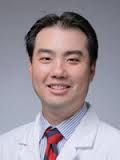 MedicalResearch.com Interview with:
Wiliam C. Huang, MD FACS
Associate Professor of Urology
Division of Urologic Oncology
NYU Langone Medical Center/Perlmutter Cancer Center
Medical Research: What is the background for this study? What are the main findings?
Dr. Huang: The presentation of kidney cancers has dramatically evolved over the past two decades with most kidney cancers being incidentally diagnosed at an early stage. We have begun to recognize that at this small size (< 4 cm), the tumors are frequently indolent in nature and some are completely benign. Consequently, the management options for these small cancers have expanded and evolved. Whereas the entire removal of the kidney was the treatment of choice in the past, alternative options including removal or ablation of the tumor-bearing portion of the kidney has become increasingly utilized. Similar to other early stage cancers, watchful waiting or observation is also becoming a reasonable treatment option.
We used the most recent SEER-Medicare Data (2001 – 2009) to evaluate the management trends and outcomes of small kidney cancers in the new millennium. We believe that this is an important study as it provides important and practical findings, which are useful to both clinical researches as well as practicing physicians.
(more…)
MedicalResearch.com Interview with:
Wiliam C. Huang, MD FACS
Associate Professor of Urology
Division of Urologic Oncology
NYU Langone Medical Center/Perlmutter Cancer Center
Medical Research: What is the background for this study? What are the main findings?
Dr. Huang: The presentation of kidney cancers has dramatically evolved over the past two decades with most kidney cancers being incidentally diagnosed at an early stage. We have begun to recognize that at this small size (< 4 cm), the tumors are frequently indolent in nature and some are completely benign. Consequently, the management options for these small cancers have expanded and evolved. Whereas the entire removal of the kidney was the treatment of choice in the past, alternative options including removal or ablation of the tumor-bearing portion of the kidney has become increasingly utilized. Similar to other early stage cancers, watchful waiting or observation is also becoming a reasonable treatment option.
We used the most recent SEER-Medicare Data (2001 – 2009) to evaluate the management trends and outcomes of small kidney cancers in the new millennium. We believe that this is an important study as it provides important and practical findings, which are useful to both clinical researches as well as practicing physicians.
(more…) MedicalResearch.com Interview with:
Mark L. Friedell, MD, FACS
Chairman Department of Surgery
University of Missouri Kansas City
School of Medicine
Kansas City, MO 64108
Medical Research: What is the background for this study? What are the main findings?
Response: The controversial practice of administering pre-surgery beta-blockers to patients having noncardiac surgery was associated with an increased risk of death in patients with no cardiac risk factors but it was beneficial for patients with three to four risk factors, according to a report published online by JAMA Surgery.
Pre-surgery β-blockade is a widely accepted practice in patients having cardiac surgery. But its use in patients at low risk of heart-related events having noncardiac surgery is controversial because of the increased risk of stroke and hypotension (low blood pressure).
Because of the persistent controversy, researcher Mark L. Friedell, M.D., of the University of Missouri-Kansas City School of Medicine, and coauthors analyzed data from the Veterans Health Administration to examine the effect of perioperative β-blockade on patients having noncardiac surgery by measuring 30-day surgical mortality.
The analysis included 326,489 patients: 314,114 (96.2 percent) had noncardiac surgery and 12,375 (3.8 percent) had cardiac surgery. Overall, 141,185 patients (43.2 percent) received a β-blocker. Of the patients having cardiac surgery, 8,571 (69.3 percent) received a β-blocker and 132,614 (42.2 percent) of the patients having noncardiac surgery got one.
The unadjusted 30-day mortality rates among patients having noncardiac surgery for those not receiving β-blockers were 0.5 percent for patients with no cardiac risk factors, 1.4 percent for patients with one to two risk factors and 6.7 percent for patients with three to four risk factors. For those patients having noncardiac surgery who did receive β-blockers, the unadjusted 30-day mortality rates for patients with no cardiac risk factors, one to two risk factors and three to four risk factors were 1 percent, 1.7 percent and 3.5 percent, respectively, according to the results.
The results suggest that among patients with no cardiac risk factors having noncardiac surgery, those patients receiving β-blockers were 1.2 times more likely to die than those not receiving β-blockers. The risk of death decreased for those patients with one to two risk factors but the reduction was not significant. However, for patients having noncardiac surgery with three to four cardiac risk factors, those receiving β-blockers were significantly less likely to die than those not receiving β-blockers, the authors found. The authors did not observe similar results in patients having cardiac surgery.
“β-blockade is beneficial perioperatively for patients with three to four cardiac risk factors undergoing NCS [noncardiac surgery] but not in patients with one to two cardiac risk factors. Most important, the use of β-blockers in patients with no cardiac risk factors appears to be associated with a higher risk of death, which has, to our knowledge, not been previously reported,” the study concludes.
(more…)
MedicalResearch.com Interview with:
Mark L. Friedell, MD, FACS
Chairman Department of Surgery
University of Missouri Kansas City
School of Medicine
Kansas City, MO 64108
Medical Research: What is the background for this study? What are the main findings?
Response: The controversial practice of administering pre-surgery beta-blockers to patients having noncardiac surgery was associated with an increased risk of death in patients with no cardiac risk factors but it was beneficial for patients with three to four risk factors, according to a report published online by JAMA Surgery.
Pre-surgery β-blockade is a widely accepted practice in patients having cardiac surgery. But its use in patients at low risk of heart-related events having noncardiac surgery is controversial because of the increased risk of stroke and hypotension (low blood pressure).
Because of the persistent controversy, researcher Mark L. Friedell, M.D., of the University of Missouri-Kansas City School of Medicine, and coauthors analyzed data from the Veterans Health Administration to examine the effect of perioperative β-blockade on patients having noncardiac surgery by measuring 30-day surgical mortality.
The analysis included 326,489 patients: 314,114 (96.2 percent) had noncardiac surgery and 12,375 (3.8 percent) had cardiac surgery. Overall, 141,185 patients (43.2 percent) received a β-blocker. Of the patients having cardiac surgery, 8,571 (69.3 percent) received a β-blocker and 132,614 (42.2 percent) of the patients having noncardiac surgery got one.
The unadjusted 30-day mortality rates among patients having noncardiac surgery for those not receiving β-blockers were 0.5 percent for patients with no cardiac risk factors, 1.4 percent for patients with one to two risk factors and 6.7 percent for patients with three to four risk factors. For those patients having noncardiac surgery who did receive β-blockers, the unadjusted 30-day mortality rates for patients with no cardiac risk factors, one to two risk factors and three to four risk factors were 1 percent, 1.7 percent and 3.5 percent, respectively, according to the results.
The results suggest that among patients with no cardiac risk factors having noncardiac surgery, those patients receiving β-blockers were 1.2 times more likely to die than those not receiving β-blockers. The risk of death decreased for those patients with one to two risk factors but the reduction was not significant. However, for patients having noncardiac surgery with three to four cardiac risk factors, those receiving β-blockers were significantly less likely to die than those not receiving β-blockers, the authors found. The authors did not observe similar results in patients having cardiac surgery.
“β-blockade is beneficial perioperatively for patients with three to four cardiac risk factors undergoing NCS [noncardiac surgery] but not in patients with one to two cardiac risk factors. Most important, the use of β-blockers in patients with no cardiac risk factors appears to be associated with a higher risk of death, which has, to our knowledge, not been previously reported,” the study concludes.
(more…)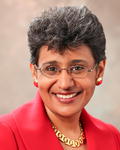 MedicalResearch.com Interview with:
Anees B. Chagpar, MD, MSc, MPH, MA, MBA, FRCS(C), FACS, Associate Professor, Department of Surgery
Director, The Breast Center -- Smilow Cancer Hospital at Yale-New Haven, Assistant Director -- Global Oncology, Yale Comprehensive Cancer Center
Program Director, Yale Interdisciplinary Breast Fellowship
Yale University School of Medicine Breast Centerm
New Haven, CT,
Medical Research: What is the background for this study? What are the main findings?
Response: Every year in the US, nearly 300,000 women are diagnosed with breast cancer -- the majority of these will have early stage breast cancer, and will opt for breast conserving surgery to remove their disease. The goal of this operation is to remove the cancer with a rim of normal tissue all the way around it (i.e., a margin), but sadly, 20-40% of women will have cancer cells at the edge of the tissue that is removed, often mandating a return trip to the operating room to remove more tissue to ensure that no further disease is left behind. No one likes to go back to the operating room -- so we asked the question, "How can we do better?". Surgeons have debated various means of obtaining clear margins. Some have advocated taking routine cavity shave margins -- a little bit more tissue all the way around the cavity after the tumor is removed at the first operation. Others have argued that this may not be necessary; that one could use intraoperative imaging of the specimen and gross evaluation to define where more tissue may need to be removed (if at all) -- i.e., selective margins. We conducted a randomized controlled trial to answer this question. We told surgeons to do their best operation, using intraoperative imaging and gross evaluation, and removing selective margins as they saw fit. After they were happy with the procedure they had performed and were ready to close, we opened a randomization envelope intraoperatively, and surgeons were either instructed to close as they normally would ("NO SHAVE"), or take a bit more tissue all the way around the cavity ("SHAVE").
Patients in both groups were evenly matched in terms of baseline characteristics. The key finding was that patients who were randomized to the "SHAVE" group half as likely to have positive final margins and require a re-operation than patients in the "NO SHAVE" group. On their postoperative visit, we asked patients, before they knew which group they had been randomized to, what they thought of their cosmetic results. While the volume of tissue excised in the "SHAVE" group was higher than in the "NO SHAVE" group, the distribution of patient-perceived cosmetic outcomes were identical in both groups. Complication rate was also no different between the two groups. We will be following patients for five years for long-term cosmetic and recurrence outcomes. (more…)
MedicalResearch.com Interview with:
Anees B. Chagpar, MD, MSc, MPH, MA, MBA, FRCS(C), FACS, Associate Professor, Department of Surgery
Director, The Breast Center -- Smilow Cancer Hospital at Yale-New Haven, Assistant Director -- Global Oncology, Yale Comprehensive Cancer Center
Program Director, Yale Interdisciplinary Breast Fellowship
Yale University School of Medicine Breast Centerm
New Haven, CT,
Medical Research: What is the background for this study? What are the main findings?
Response: Every year in the US, nearly 300,000 women are diagnosed with breast cancer -- the majority of these will have early stage breast cancer, and will opt for breast conserving surgery to remove their disease. The goal of this operation is to remove the cancer with a rim of normal tissue all the way around it (i.e., a margin), but sadly, 20-40% of women will have cancer cells at the edge of the tissue that is removed, often mandating a return trip to the operating room to remove more tissue to ensure that no further disease is left behind. No one likes to go back to the operating room -- so we asked the question, "How can we do better?". Surgeons have debated various means of obtaining clear margins. Some have advocated taking routine cavity shave margins -- a little bit more tissue all the way around the cavity after the tumor is removed at the first operation. Others have argued that this may not be necessary; that one could use intraoperative imaging of the specimen and gross evaluation to define where more tissue may need to be removed (if at all) -- i.e., selective margins. We conducted a randomized controlled trial to answer this question. We told surgeons to do their best operation, using intraoperative imaging and gross evaluation, and removing selective margins as they saw fit. After they were happy with the procedure they had performed and were ready to close, we opened a randomization envelope intraoperatively, and surgeons were either instructed to close as they normally would ("NO SHAVE"), or take a bit more tissue all the way around the cavity ("SHAVE").
Patients in both groups were evenly matched in terms of baseline characteristics. The key finding was that patients who were randomized to the "SHAVE" group half as likely to have positive final margins and require a re-operation than patients in the "NO SHAVE" group. On their postoperative visit, we asked patients, before they knew which group they had been randomized to, what they thought of their cosmetic results. While the volume of tissue excised in the "SHAVE" group was higher than in the "NO SHAVE" group, the distribution of patient-perceived cosmetic outcomes were identical in both groups. Complication rate was also no different between the two groups. We will be following patients for five years for long-term cosmetic and recurrence outcomes. (more…)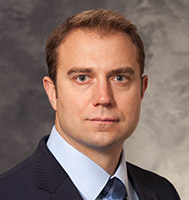 MedicalResearch.com Interview with:
Prof. Dr. Robert Sanders MD
Assistant Professor, Anesthesiology & Critical Care Trials & Interdisciplinary Outcomes Network (ACTION)
Department of Anesthesiology
University of Wisconsin, Madison, WI
Medical Research: What is the background for this study? What are the main findings?
Dr. Sanders: While it is known that chronic raised blood pressure exerts important effects on long term health outcomes, it is unclear how pre-operative blood pressure levels effect risk from surgery. In this study we show that after adjustment for other diseases, high blood pressure does not increase perioperative risk. Rather low blood pressure is associated with an increase in risk of death following surgery and anesthesia.
(more…)
MedicalResearch.com Interview with:
Prof. Dr. Robert Sanders MD
Assistant Professor, Anesthesiology & Critical Care Trials & Interdisciplinary Outcomes Network (ACTION)
Department of Anesthesiology
University of Wisconsin, Madison, WI
Medical Research: What is the background for this study? What are the main findings?
Dr. Sanders: While it is known that chronic raised blood pressure exerts important effects on long term health outcomes, it is unclear how pre-operative blood pressure levels effect risk from surgery. In this study we show that after adjustment for other diseases, high blood pressure does not increase perioperative risk. Rather low blood pressure is associated with an increase in risk of death following surgery and anesthesia.
(more…) MedicalResearch.com Interview with:
Robert A. Meguid, MD MPH FACS
Assistant Professor Section of General Thoracic Surgery
Division of Cardiothoracic Surgery Department of Surgery
University of Colorado Denver | Anschutz Medical Campus
Aurora, CO 80045
Medical Research: What is the background for this study? What are the main findings?
Dr. Meguid: The surgical literature on adverse outcomes after surgery on pregnant patients is conflicting. We know that the majority of surgery performed on pregnant patients is not elective (and just over 50% of it in the database studied was emergency surgery). We expected to find an increased rate of adverse outcomes in those pregnant patients. However, when we matched the pregnant and non-pregnant women who underwent surgery in the database, with excellent matching on all available preoperative characteristics and on the actual operation performed, we found similar, low rates of 30-day postoperative death and complication. In this study, pregnant patients had undergone a broad spectrum of different types of operations, including general, vascular, thoracic, head and neck, non-obstetric gynecologic and urologic, orthopedic, reconstructive, and neuro-surgery. Given the concern that we as surgeons have over operating on pregnant patients, both for the well-being of the patient and her child, our findings are reassuring. This suggests that we as a medical profession are diligent in minimizing risk to pregnant women who need surgery that cannot be delayed until after the child's birth. Again, this study faces the limitations of being unable to assess any short term harm done to the fetus and the subsequent long term outcome of the child.
(more…)
MedicalResearch.com Interview with:
Robert A. Meguid, MD MPH FACS
Assistant Professor Section of General Thoracic Surgery
Division of Cardiothoracic Surgery Department of Surgery
University of Colorado Denver | Anschutz Medical Campus
Aurora, CO 80045
Medical Research: What is the background for this study? What are the main findings?
Dr. Meguid: The surgical literature on adverse outcomes after surgery on pregnant patients is conflicting. We know that the majority of surgery performed on pregnant patients is not elective (and just over 50% of it in the database studied was emergency surgery). We expected to find an increased rate of adverse outcomes in those pregnant patients. However, when we matched the pregnant and non-pregnant women who underwent surgery in the database, with excellent matching on all available preoperative characteristics and on the actual operation performed, we found similar, low rates of 30-day postoperative death and complication. In this study, pregnant patients had undergone a broad spectrum of different types of operations, including general, vascular, thoracic, head and neck, non-obstetric gynecologic and urologic, orthopedic, reconstructive, and neuro-surgery. Given the concern that we as surgeons have over operating on pregnant patients, both for the well-being of the patient and her child, our findings are reassuring. This suggests that we as a medical profession are diligent in minimizing risk to pregnant women who need surgery that cannot be delayed until after the child's birth. Again, this study faces the limitations of being unable to assess any short term harm done to the fetus and the subsequent long term outcome of the child.
(more…) MedicalResearch.com Interview with:
Bernadette A.M. Heemskerk-Gerritsen, Ph.D.
Department of Medical Oncology
Erasmus MC Cancer Institute
Roterdam, the Netherlands
Medical Research: What is the background for this study? What are the main findings?
Dr. Heemskerk-Gerritsen: Women with a BRCA1 or BRCA2 mutation have substantially higher risks of developing both primary and contralateral breast cancer (BC) and ovarian cancer than women from the general population. Options to reduce these increased cancer risks include risk-reducing mastectomy (RRM) and/or risk-reducing salpingo-oophorectomy (RRSO). The latter intervention obviously reduces the risk of developing ovarian cancer, but has been reported also to reduce the risk of developing a subsequent breast cancer with approximately 50%. However, studies on the efficacy of risk-reducing surgery in BRCA1/2 mutation carriers are confined to observational studies, thus challenging several methodological issues. Consequently, previous studies on breast cancer risk-reduction after RRSO may have been influenced by bias associated with selection of study subjects, bias associated with start of follow-up, or by confounding, and breast cancer risk-reduction may have been overestimated.
In the current study, we revisited the association between risk-reducing salpingo-oophorectomy and breast cancer risk in BRCA1/2 mutation carriers, focusing on the impact of different analytical methods and potential types of bias.
First, we replicated the analyses of four previously performed studies, to examine if our Dutch cohort was comparable with the cohorts used in the previous studies. We replicated the approximately 50% breast cancer risk reduction after RRSO in the Dutch cohort.
Second, we estimated the effect of RRSO on breast cancer risk in the Dutch cohort using a revised analytical approach for observational studies in BRCA1/2 mutation carriers in order to minimize bias as much as possible. Using this method of analysis, we found no evidence of first BC risk-reduction after RRSO in BRCA1/2 mutation carriers.
(more…)
MedicalResearch.com Interview with:
Bernadette A.M. Heemskerk-Gerritsen, Ph.D.
Department of Medical Oncology
Erasmus MC Cancer Institute
Roterdam, the Netherlands
Medical Research: What is the background for this study? What are the main findings?
Dr. Heemskerk-Gerritsen: Women with a BRCA1 or BRCA2 mutation have substantially higher risks of developing both primary and contralateral breast cancer (BC) and ovarian cancer than women from the general population. Options to reduce these increased cancer risks include risk-reducing mastectomy (RRM) and/or risk-reducing salpingo-oophorectomy (RRSO). The latter intervention obviously reduces the risk of developing ovarian cancer, but has been reported also to reduce the risk of developing a subsequent breast cancer with approximately 50%. However, studies on the efficacy of risk-reducing surgery in BRCA1/2 mutation carriers are confined to observational studies, thus challenging several methodological issues. Consequently, previous studies on breast cancer risk-reduction after RRSO may have been influenced by bias associated with selection of study subjects, bias associated with start of follow-up, or by confounding, and breast cancer risk-reduction may have been overestimated.
In the current study, we revisited the association between risk-reducing salpingo-oophorectomy and breast cancer risk in BRCA1/2 mutation carriers, focusing on the impact of different analytical methods and potential types of bias.
First, we replicated the analyses of four previously performed studies, to examine if our Dutch cohort was comparable with the cohorts used in the previous studies. We replicated the approximately 50% breast cancer risk reduction after RRSO in the Dutch cohort.
Second, we estimated the effect of RRSO on breast cancer risk in the Dutch cohort using a revised analytical approach for observational studies in BRCA1/2 mutation carriers in order to minimize bias as much as possible. Using this method of analysis, we found no evidence of first BC risk-reduction after RRSO in BRCA1/2 mutation carriers.
(more…)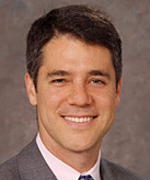 MedicalResearch.com Interview with:
Robert J Canter MD
Associate Professor of Clinical Surgery
Division of Surgical Oncology
University of California at Davis
Medical Research: What is the background for this study?
Dr. Canter: Our data suggest that surgeons are improving in their ability to select patients for surgical intervention in cancer patients near their end of life. Our research suggests that surgeons may be operating on healthier patients who are anticipated to have a better recover from a palliative operation. These are patients who can perform activities of daily living without assistance, for example.
Our interest in the appropriate surgical care of people with late-stage cancer grew from observing terminally ill patients whose acute problems were addressed through surgery, and who then suffered complications resulting in lengthy stays in intensive care units, and even in death.
Unfortunately, it is quite common that this group of disseminated malignancy patients end up dying in the intensive care unit instead of being managed with less invasive interventions with hopes of returning home with their families, including with hospice care.
(more…)
MedicalResearch.com Interview with:
Robert J Canter MD
Associate Professor of Clinical Surgery
Division of Surgical Oncology
University of California at Davis
Medical Research: What is the background for this study?
Dr. Canter: Our data suggest that surgeons are improving in their ability to select patients for surgical intervention in cancer patients near their end of life. Our research suggests that surgeons may be operating on healthier patients who are anticipated to have a better recover from a palliative operation. These are patients who can perform activities of daily living without assistance, for example.
Our interest in the appropriate surgical care of people with late-stage cancer grew from observing terminally ill patients whose acute problems were addressed through surgery, and who then suffered complications resulting in lengthy stays in intensive care units, and even in death.
Unfortunately, it is quite common that this group of disseminated malignancy patients end up dying in the intensive care unit instead of being managed with less invasive interventions with hopes of returning home with their families, including with hospice care.
(more…)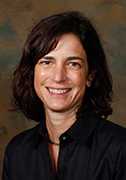 MedicalResearch.com Interview with:
Emily Finlayson, MD, MS
Department of Surgery, Division of General Surgery
Department of Medicine, Division of Geriatrics
Philip R Lee Institute for Health Policy
University of California, San Francisco
Director, UCSF Center for Surgery in Older Adults
Medical Research: What is the background for this study? What are the main findings?
Dr. Finlayson: In general, the goal of lower extremity revascularization is to preserve the leg so that patients can maintain the ability to ambulate and maintain functional independence. We evaluated the results of this operation in older nursing home residents in the United States. We found that over the 3 year study period, over 10,000 nursing home residents underwent this procedure. Most of them were functionally dependent before surgery, 3/4 were unable to walk, and over half had dementia.
After 1 year, half of the residents had died. Among residents who could not walk before surgery, 89% were dead or non ambulatory 1 year after surgery.
(more…)
MedicalResearch.com Interview with:
Emily Finlayson, MD, MS
Department of Surgery, Division of General Surgery
Department of Medicine, Division of Geriatrics
Philip R Lee Institute for Health Policy
University of California, San Francisco
Director, UCSF Center for Surgery in Older Adults
Medical Research: What is the background for this study? What are the main findings?
Dr. Finlayson: In general, the goal of lower extremity revascularization is to preserve the leg so that patients can maintain the ability to ambulate and maintain functional independence. We evaluated the results of this operation in older nursing home residents in the United States. We found that over the 3 year study period, over 10,000 nursing home residents underwent this procedure. Most of them were functionally dependent before surgery, 3/4 were unable to walk, and over half had dementia.
After 1 year, half of the residents had died. Among residents who could not walk before surgery, 89% were dead or non ambulatory 1 year after surgery.
(more…)MedicalResearch.com Interview with: Dr. Joseph Bosco MD III Orthopedic Surgery The New York University Langone Medical Center Medical Research: What is the background for...
 MedicalResearch.com Interview with:
Anthony Delitto, PT, Ph.D, FAPTA
Professor and Chair
Department of Physical Therapy
Associate Dean for Research, SHRS
School of Health and Rehabilitation Sciences
University of Pittsburgh
Medical Research: What is the background for this study? What are the main findings?
Dr. Delitto: I work with a team, many of whom were authors on the paper, and we see a lot of patients with lumbar spinal stenosis. Some of them did very well with Physical Therapy and avoided surgery. Some people didn’t do well and we ended up having surgery. We really wanted to do a study that compared, in a randomized format, doing surgery vs. a non-surgical approach to lumbar spinal stenosis. The idea we had was to really put the two approaches head to head – a randomized trial of surgery vs. physical therapy for people with lumbar spinal stenosis. We decided only to recruit patients after they had consented to surgery in order to avoid the pitfalls of previous studies where people crossed over after being assigned to a group, for example, being assigned to surgery and then deciding against having surgery.
Medical Research: What should clinicians and patients take away from your report?
Dr. Delitto: Probably the biggest point to put across to physicians, patients and practitioners, one of the things we realized was: patients don’t exhaust all of their non-surgical options before they consent to surgery. And physical therapy is one of the non-surgical options. The obvious finding is, when you compare the two groups, they seem to do the same. The results were equivalent at two years. Now, embedded in that, there are patients who did well in surgery, and patients who failed in surgery. There are patients who did well in Physical Therapy, and there are patients who failed with PT. But when we looked across the board at all of those groups, their success and failure rates were about the same. So it tells us that for the most part there were equivalent outcomes at two years.
(more…)
MedicalResearch.com Interview with:
Anthony Delitto, PT, Ph.D, FAPTA
Professor and Chair
Department of Physical Therapy
Associate Dean for Research, SHRS
School of Health and Rehabilitation Sciences
University of Pittsburgh
Medical Research: What is the background for this study? What are the main findings?
Dr. Delitto: I work with a team, many of whom were authors on the paper, and we see a lot of patients with lumbar spinal stenosis. Some of them did very well with Physical Therapy and avoided surgery. Some people didn’t do well and we ended up having surgery. We really wanted to do a study that compared, in a randomized format, doing surgery vs. a non-surgical approach to lumbar spinal stenosis. The idea we had was to really put the two approaches head to head – a randomized trial of surgery vs. physical therapy for people with lumbar spinal stenosis. We decided only to recruit patients after they had consented to surgery in order to avoid the pitfalls of previous studies where people crossed over after being assigned to a group, for example, being assigned to surgery and then deciding against having surgery.
Medical Research: What should clinicians and patients take away from your report?
Dr. Delitto: Probably the biggest point to put across to physicians, patients and practitioners, one of the things we realized was: patients don’t exhaust all of their non-surgical options before they consent to surgery. And physical therapy is one of the non-surgical options. The obvious finding is, when you compare the two groups, they seem to do the same. The results were equivalent at two years. Now, embedded in that, there are patients who did well in surgery, and patients who failed in surgery. There are patients who did well in Physical Therapy, and there are patients who failed with PT. But when we looked across the board at all of those groups, their success and failure rates were about the same. So it tells us that for the most part there were equivalent outcomes at two years.
(more…)MedicalResearch.com Interview with: Dr. H. Jaap Bonjer, PhD, FRCSC Professor of Surgery Chair Department of Surgery VU University Medical Center Amsterdam Amsterdam Medical Research: What is...
 MedicalResearch.com Interview with:
Uzma Samadani, MD, PhD
Chief of Neurosurgery, New York Harbor Health Care System
Assistant Professor, Departments of Neurosurgery, Psychiatry, Neuroscience and Physiology
Co-Director, Steven and Alexandra Cohen Veterans Center
NYU Langone Medical Center
Medical Research: What is the background for this study? What are the main findings?
Response: The purpose of this study was to determine the current and future incidence of chronic subdural hemorrhage in the United States civilian and Veterans' Administration populations. It's main findings are that, as the population ages, the incidence of subdural hemorrhage is increasing.
(more…)
MedicalResearch.com Interview with:
Uzma Samadani, MD, PhD
Chief of Neurosurgery, New York Harbor Health Care System
Assistant Professor, Departments of Neurosurgery, Psychiatry, Neuroscience and Physiology
Co-Director, Steven and Alexandra Cohen Veterans Center
NYU Langone Medical Center
Medical Research: What is the background for this study? What are the main findings?
Response: The purpose of this study was to determine the current and future incidence of chronic subdural hemorrhage in the United States civilian and Veterans' Administration populations. It's main findings are that, as the population ages, the incidence of subdural hemorrhage is increasing.
(more…)